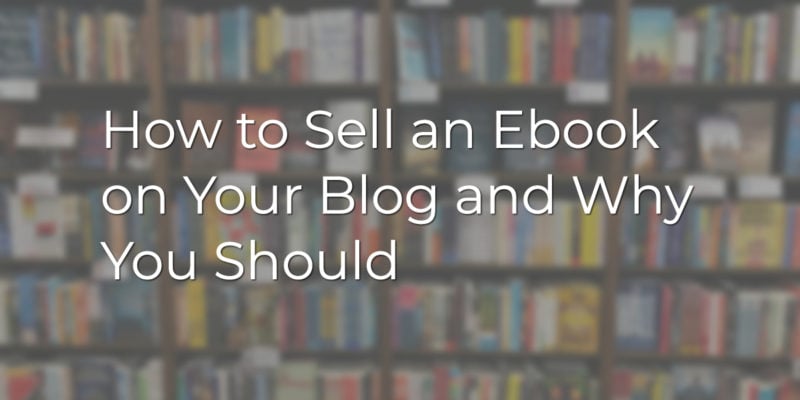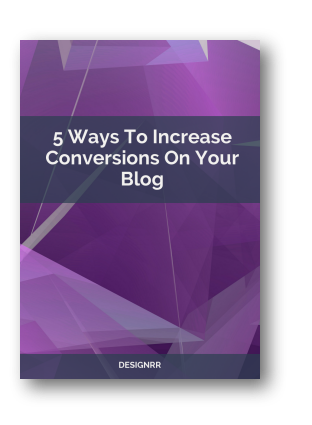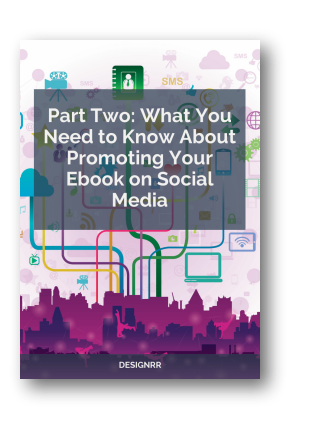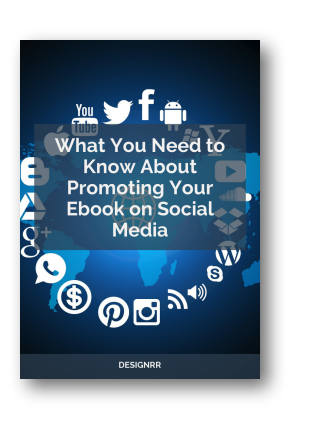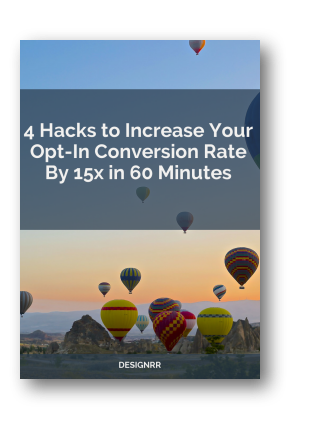If you’re selling eBooks on your blog or website and not making any money you may be wondering what other bloggers are doing. Do they have a formula they use? Is it luck? Or do they actually have a set of carefully planned out strategies and techniques?
The answer is the latter and today you will learn exactly what you need to do to start selling eBooks on your blog. It does not matter whether you are just starting out or have an established blog and want to start making money through eBooks. Keep reading to learn more!
First things first…
You can’t promote and sell a product you don’t have. You need an actual product, in this case, an eBook to start selling. Fortunately, it’s fairly easy to create one. The key is to write something that resonates with your audience.
Now let’s take a look at how to create the right kind of eBook.
Create your eBook

We have an entire article on how you can write your ebook in 7 steps if you want to skip to the selling part of this article.
You can also use an ebook creator like Designrr.io to help you with the entire process. But if you want to know on how you can create an ebook, lets go!
As mentioned above, creating an eBook is fairly easy. It starts will pulling together a number of ideas and then finding the right one for your audience. You want your eBook to be engaging and interesting. If you don’t yet have a blogyou can always find interesting ideas through Google Trends, looking at competitor blogs, or even joining Facebook groups. Try any of these and you will find a plethora of ideas to write about.
The steps below will guide you with the creation process so you know exactly what you need to do.
Choose a Topic
Don’t just pick a topic because you find it interesting. Make sure you take the time to do the research. Go beyond the obvious and come up with a topic that really excites your audience. That way, your eBook will stand out fromthe crowd. Keep in mind that you are not the only one publishing eBooks. So, do everything possible to be unique.
Write About It

How you write and put together your eBook matters a lot. If you do it correctly your prospects will keep coming back for more, whereas if it’s done haphazardly you will not only lose sales but may lose some of your followers as well. However, before you can even consider writing you need to first understand who you are writing to. Who is your audience? What do they like? What types of information are they looking for? Is there a problem they have that you can help solve? Get to know your audience first before doing anything else. And if you are not very good are writing engaging content then consider getting someone to help.
What Is the Correct Length for an eBook?

Honestly, it is a bit tricky to answer this question. But to help you get started, we recommend that you consider the category of your eBook and compare it with your competitors. Keep in mind that you want to stand out from the competition. So, be one step ahead of them.
But don’t get so caught up on the length of your book, instead focus on the quality. For example, don’t use fewer words where more words are required to explain something or vice versa. In a nutshell, your eBook should be as long as needed to provide the information required. Find the right balance and that will reveal the correct length of your book.
Come up With a Title
Your title is the first thing that your potential readers will see. It needs to stand out. Think of some of the titles of books that you have recently read. Why did you like them? A great title will help to get you the results you want so take the time to craft the perfect one for your eBook. The title should clearly capture the essence of what your eBook is all about. Something like “How I Lost 40 Pounds in a Year and Regained My Self Confidence” would definitely appeal to an audience looking to lose weight. It solves a problem and gives them hope.
Format the Content
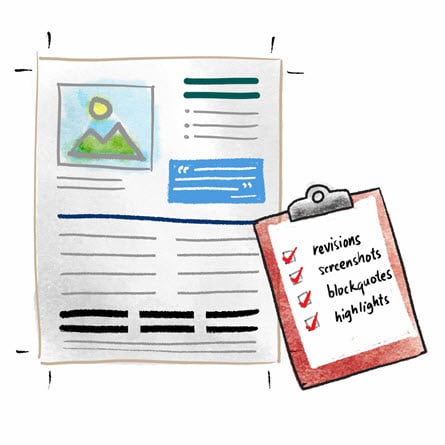
How you format your eBook is an important step. Formatting it correctly will make it easy for people to read and consume the information. Consider using legible fonts, relevant images, spacing out your paragraphs, using headings and subheadings, and so on.
Proofread It

Always check your work for any grammatical or spelling errors. This is best done once you have finished writing a chapter or section. You can also use tools like Grammarly or WhiteSmoke to improve the quality of your writing. This way, you will be sure to deliver a high quality product to your readers. Check out our article on the best proofreading software you can use.
Design a Cover

An attractive and visually appealing cover not only looks good, but it also sells more books. Give your audience a reason to buy and download your eBook by designing a professional cover. Keep in mind that you only have one chance to make a great first impression and it is what will determine the authority and credibility of your eBook.
Convert It to a Digital Format
Once your eBook is ready, the next step is converting it to multiple formats. By converting (via various websites online), you allow people to read your eBook on different devices. These formats include:
- Epub – for most e-readers, including Kobi and iBooks
- Mobi – for Amazon Kindle
- PDF – to make it easily accessible
How to Sell Your eBook Online
Once your eBook is polished and ready, the next exciting phase is setting it up for sale. Whether it’s on your website or through other platforms, the process is straightforward and rewarding.
Selling on Your Website
- Advantages of Selling Directly: Selling your eBook on your own website is highly recommended. This approach keeps you in complete control, allowing you to retain 100% of the profits. Plus, it facilitates direct engagement with your readers, fostering a community around your work.
- Setting Up with WooCommerce or PayPal: For WordPress users, WooCommerce offers a comprehensive solution for selling eBooks. It provides flexibility in managing your digital store and integrates smoothly with your website. PayPal is another robust option, providing a direct and trusted way for customers to make purchases. Both platforms are user-friendly and allow for easy integration with your site.
- Creating Your Sales Page: Design a sales page that is both visually appealing and user-friendly. Showcase your eBook with a captivating description, clear pricing, and a prominent ‘Buy Now’ button. This page is your opportunity to convince visitors to make a purchase, so every element should aim to convert interest into sales.
- Managing Transactions and Payouts: With WooCommerce, manage all aspects of the sales process, including secure transactions. Regularly monitor your sales and manage payouts, ensuring a smooth financial process. PayPal also offers straightforward transaction management, with funds typically transferred to your account quickly.
Pros and Cons of Using WooCommerce:
- Pros: Complete customization, integration with a variety of payment gateways, direct customer relationship management, and suitability for both digital and physical products.
- Cons: Requires basic technical knowledge for setup and management, responsibility for site security and data privacy, and ongoing maintenance of your eCommerce platform.
Selling via Third-Party Platforms
Exploring various platforms for selling your eBook can significantly extend its reach. Each platform offers unique advantages and caters to different aspects of eBook marketing and sales. Here’s a comprehensive look:
- Amazon: Selling your ebook on Amazon provides global exposure and handles transactions to delivery. Be mindful of their fees, which can affect your profit margin.
- ClickBank: An excellent platform for leveraging affiliate marketing networks. It offers promotional tools but has a higher fee structure.
- PayHip: Suitable for beginners, it’s straightforward and offers valuable marketing and sales analytics tools.
- Smashwords: Popular among independent authors, it distributes eBooks to various retailers and retains a significant portion of sales profits.
- Draft2Digital: Known for its user-friendly interface, it distributes to retailers like Amazon, Kobo, and Apple Books and automates conversion to various eBook formats.
- Gumroad: Ideal for direct sales, Gumroad allows you to embed sales widgets on your site and is also suitable for other digital products.
- Lulu: Offers both eBook and print-on-demand services, selling through its marketplace and distributing to platforms like Amazon and Barnes & Noble.
- IngramSpark: A good choice for both eBook and print distribution, IngramSpark has a wide network, reaching major retail outlets and libraries.
- Kobo Writing Life: Publish directly to Kobo’s eBookstore, with a strong international presence and competitive royalties.
- Barnes & Noble Press: Enables publishing to the Barnes & Noble online store, offering good royalty rates and promotional opportunities within their ecosystem.
Balancing Direct Sales and Platform Sales
Employing a dual strategy of selling on your website for maximum profit and on third-party platforms for increased exposure can optimize your eBook’s success. Each platform has its unique fee structure and terms of service, so understanding these details is crucial for aligning them with your sales and marketing strategies.
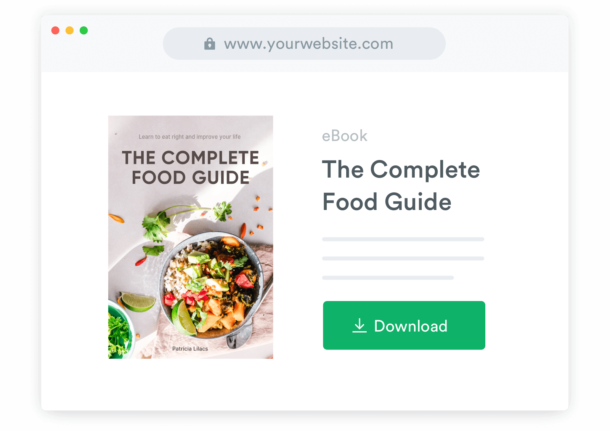
The table below provides a clear and detailed comparison of the various platforms, helping you decide the best approach for selling your eBook based on your specific needs and capabilities. Here’s the comprehensive comparison table for various eBook selling platforms and methods:
| Platform/Method | Pros | Cons |
|---|---|---|
| Your Own Website with WooCommerce | Complete customization, integration with various payment gateways, direct customer relationship management, suitable for both digital and physical products | Requires basic technical knowledge, responsible for site security and data privacy, ongoing maintenance needed |
| Your Own Website with PayPal | Trusted and widely recognized payment method, simple integration, direct control over sales process | Manual setup for each product, handling customer data securely is your responsibility, limited sales analytics |
| Amazon | Unparalleled global audience, comprehensive platform handling sales to delivery, strong customer trust | Higher fees leading to lower profit per sale, limited control over pricing and customer relationship, highly competitive |
| ClickBank | Strong affiliate marketing network, global reach, promotional and marketing tools available | Higher fees compared to direct sales, competition with other products, affiliate marketing requires management |
| PayHip | User-friendly interface, ideal for beginners, marketing and sales analytics tools, lower fees than other third-party platforms | Less brand recognition, smaller audience reach, relies on your marketing efforts |
| Smashwords | Distributes to a wide array of retailers, retains a significant portion of sales profits, popular among independent authors | Less direct customer relationship, varying degrees of visibility depending on the retailer |
| Draft2Digital | User-friendly interface, distributes to various eBook retailers, automated conversion to various formats | Competition with a wide range of eBooks, dependent on external retailer policies and visibility |
| Gumroad | Simple setup, direct sales to audience, suitable for various digital products, embed sales widgets on site | Lower audience reach compared to larger platforms, reliant on creator’s marketing efforts |
| Lulu | Offers both eBook and print-on-demand services, sells through its marketplace and to larger platforms, good control over pricing | Requires self-promotion for visibility, platform fees can impact profits, print service adds complexity |
| IngramSpark | Wide distribution network for eBook and print, reaches major retail outlets and libraries, suitable for broader market penetration | More complex setup, fees for printing and distribution services, caters to a more traditional publishing route |
| Kobo Writing Life | Publish directly to Kobo eBookstore, significant international presence, competitive royalties | Less visibility in the U.S. market, platform-specific marketing required, largely caters to the Kobo ecosystem |
| Barnes & Noble Press | Direct publishing to Barnes & Noble online store, competitive royalty rates, promotional opportunities within B&N ecosystem | Limited to Barnes & Noble’s audience, competitive with other authors on the platform, requires marketing to stand out |
Market and Promote Your Ebooks

Your eBook is now online and ready for download, but your journey towards success is just beginning. Promotion is key. The effectiveness of your marketing efforts determines the reach and impact of your eBook. Let’s delve into some refined strategies:
- Leverage Your Blog: Use your blog as a primary platform for promotion. Write compelling articles related to your eBook’s topic, showcasing your expertise and the value your eBook offers. Regularly update your blog with fresh content to keep your audience engaged and interested in your eBook.
- Create Newsletters: Newsletters are a powerful tool for keeping your audience informed and interested. Share updates, teasers, and special offers related to your eBook. Personalize these newsletters to make each recipient feel valued and more inclined to engage with your content.
- Creative Use of Banners: Design eye-catching banners for your website to promote your eBook. Place them strategically to ensure maximum visibility without disrupting the user experience.
- Social Media Buzz: Create a buzz around your eBook on social media platforms. Regularly post engaging content related to your eBook, such as snippets, quotes, or intriguing questions that pique interest. Interact with your followers to build a community around your eBook.
- Partnering with Bloggers: Collaborate with other bloggers in your niche. This can be through guest posts, joint webinars, or mutual promotions. Such partnerships can open doors to new audiences and enhance your eBook’s credibility.
- Building a Market: For beginners, focus on building a market for your eBook rather than immediate sales. Engage in guest posting, active participation in relevant social media groups, and potentially starting a podcast. These efforts help you gain recognition and build a loyal following.
- Dedicated Landing Page: Create a landing page exclusively for your eBook. This page should highlight the benefits of your eBook, include testimonials, and have a clear call-to-action. A well-designed landing page can significantly increase conversions.
- Supporting Content Formats: Utilize different content formats to promote your eBook. This can include video trailers, infographics, or podcasts. These varied formats cater to different audience preferences and can broaden your reach.
- Maximizing Social Media: Go beyond regular posts. Conduct live Q&A sessions, host giveaways, or create interactive content related to your eBook. Utilize targeted ads to reach potential readers outside your current follower base.
- Exploring Other Platforms: Look beyond your website and social media. Platforms like Medium, LinkedIn, or industry-specific forums can be excellent places to share content and direct readers to your eBook.
- Leveraging Viral Tools: Utilize tools like BuzzSumo to identify trending topics in your niche. Create content around these trends to attract more attention to your eBook.
- Guest Blogging on Authority Sites: Write guest posts for reputable sites in your niche. This not only drives traffic to your eBook but also establishes you as an authority in your field.
- Traditional Email Outreach: Develop a strategy for traditional email outreach. Personalize your emails to potential readers, bloggers, or influencers who might be interested in your eBook. This direct approach can be highly effective in gaining attention and sales.
Click the following link for more information on how to promote your eBook.
Check also our ultimate ebook launch guide + checklist.
Post-Sale Strategies and Gathering Customer Feedback
Once your eBook starts selling, the journey doesn’t end there. Engaging with your customers post-sale is crucial for building a strong relationship and ensuring the success of your future eBooks. Here’s how you can do it effectively:
1. Follow Up with Your Customers
Send a thank-you email to your customers after their purchase. This personal touch can make a big difference. You can use this opportunity to ask for their feedback on the eBook or provide them with additional resources related to the topic.
2. Encourage Reviews and Testimonials
Reviews and testimonials are like gold for your eBook. They not only provide social proof but also give insights into what readers liked and what could be improved. Encourage your readers to leave a review on your website or the platform where they purchased the eBook.
3. Use Feedback for Improvement
Pay close attention to the feedback and reviews you receive. They are invaluable for understanding your audience’s needs and preferences. Use this information to update your current eBook or to make your next one even better.
4. Create a Community
Consider creating a community around your eBook, like a Facebook group or an online forum. This can be a platform for readers to discuss your eBook, share ideas, and provide feedback directly to you.
5. Keep Them Updated
Keep your customers in the loop with future projects or updates to your eBook. This not only keeps them engaged but also helps in building a loyal customer base.
Obstacles and Challenges When Selling an Ebook and How To Overcome It
Selling an eBook can be a rewarding endeavor, but it’s not without its challenges. Understanding these obstacles and learning how to overcome them is crucial for success in the eBook market. Here are some common challenges and strategies to address them:
- Getting Noticed in a Crowded Market
- Obstacle: With millions of eBooks available, standing out can be difficult.
- Solution: Focus on niche marketing. Target specific audiences with tailored content. Use SEO strategies to improve visibility on search engines and engage in active social media marketing to build a dedicated following.
- Building an Audience
- Obstacle: Attracting and retaining readers can be challenging, especially for new authors.
- Solution: Start building your audience before your eBook is released. Use blogging, social media, and email newsletters to connect with potential readers. Offer free content or previews to entice interest.
- Pricing Your eBook Competitively
- Obstacle: Determining the right price that balances profitability with attractiveness to buyers.
- Solution: Research your genre and audience to understand pricing expectations. Consider introductory discounts or promotional pricing. Regularly review and adjust your pricing strategy based on sales performance and feedback.
- Generating Quality Reviews
- Obstacle: Reviews are critical for sales, but they can be hard to come by.
- Solution: Encourage readers to leave reviews. Consider providing free copies to book bloggers or reviewers in exchange for honest reviews. Engage with readers through social media and email, and gently remind them how valuable their feedback is.
- Dealing with Piracy
- Obstacle: Digital content is prone to piracy, leading to potential revenue loss.
- Solution: Use digital rights management (DRM) tools to protect your eBook. However, be aware that DRM can also inconvenience legitimate buyers. Alternatively, focus on building a loyal fanbase that values supporting authors directly.
- Creating an Engaging Cover and Blurb
- Obstacle: The cover and blurb are often the first things a potential reader sees, and a poor design or unappealing description can deter sales.
- Solution: Invest in professional cover design and blurb writing. Your cover should be visually striking and genre-appropriate, while your blurb needs to be engaging and succinct.
- Navigating eBook Formats and Distribution
- Obstacle: Choosing the right formats and distribution channels can be overwhelming.
- Solution: Research the most popular eBook formats (like ePub, Mobi) and ensure your eBook is compatible with major platforms. Consider using eBook distribution services that can handle this for you.
- Maintaining Sales Momentum
- Obstacle: Initial sales may be strong, but maintaining that momentum can be challenging.
- Solution: Regularly promote your eBook through different channels. Update your eBook with new content or editions. Bundle it with other products or run periodic promotions to keep the interest alive.
Wrapping up
Creating an eBook and selling it is not an easy task. Let’s not deny that. You need to be patient to see some good results. The best thing is that you get to share your expertise with your audience, and most importantly, you begin the path to earning a living online. So, if you are thinking about a good source for creating passive income, why not try selling eBooks on your blog or other platforms!
